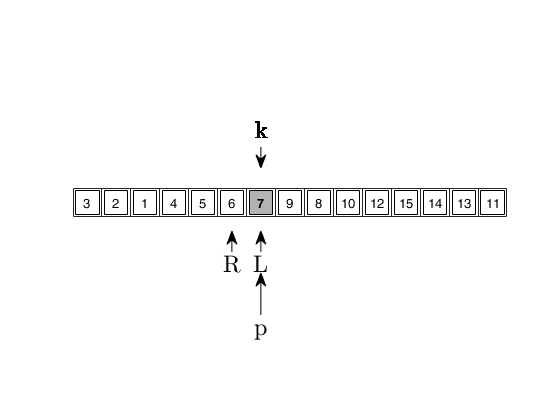quickselectFS_demo
quickselectFS_demo illustrates the functioning of quickselectFS
Description
Examples
Input Arguments
Output Arguments
References
Azzini, I., Perrotta, D. and Torti, F. (2023), A practically efficient fixed-pivot selection algorithm and its extensible MATLAB suite, "arXiv, stat.ME, eprint 2302.05705"
 quickselectFS_demo with all default options.
quickselectFS_demo with all default options.